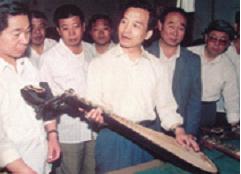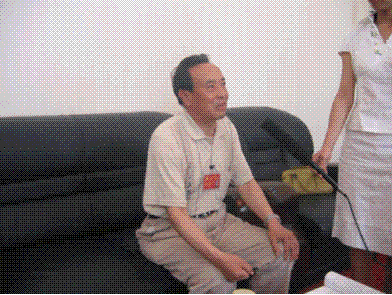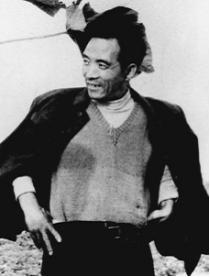精彩推荐
专题推荐
-
没有记录!
兰考泡桐
2012/6/7 11:37:41 点击数: 【字体:大 中 小】
兰考县泡桐材质轻柔,结构均匀,不翘不裂不变形,耐蚀耐腐耐高温,是制家俱、模型、乐器的上乘材料。经北京乐器研究所对全国十几个地区桐木板材的研究鉴定,确定兰考泡桐为全国制做古筝、琵琶面板等乐器的最佳材料。
兰考县位于黄河岸边,历史上黄河曾多次在此泛滥改道,形成了大面积地质疏松、透气性能较好的少质土,对泡桐生长十分有利。60年代初,兰考县委书记焦裕禄根据兰考的地理环境倡导栽种泡桐。自那时起,泡桐的种植得到推广,成为兰考县农业一大优势。兰考泡桐是我国八大优良树种之一,生长迅速,当地有“一年一根杆,两年粗如碗,三年能锯板“之说。8-10年采伐,胸径可达50-80厘米,材积量在0.5立方米以上。因此,当地群众说:“要想富,栽桐树,生产致富好门路。”
目前,兰考县泡桐树达600多万棵,每年除满足当地需要外,还可向国家提供3万多立方米的桐材,已成为我国重要的桐木生产基地。兰考泡桐加工的桐木漆器,毛拼板等在日本享有盛誉,年创汇3000万元。加工制作的琵琶、古筝等乐器远销日本、美国、德国、加拿大、香港等国家和地区,为国家做出了贡献。
Lankao Paulownia
Lankao paulownia has soft and light wood and balanced structure. It will endure corrosion and high temperature, and not get cracked, raised up or transformed. These characteristics determine it to be superior materials for making furniture, models and instruments.
Lankao County is located in the shore of the Yellow River, where soft sandy soil is appropriate for paulownia's growing. It was initiate in Lankao County in early 1960s by Jiao Yulu, and later was spread widely. Nowadays, it has been an advantage in Lankao and become one of the eight superior tree species in China. Lacquer paulownia wood and rough jointed boards made from paulownia enjoys a high reputation in Japan; Chinese lutes and kotoes made from it have been sold to Japan, America, Germany, Canada, Hong Kong and many other regions, which makes a great contribution to Chinese economy.
责任编辑:C005文章来源:印象河南网
相关信息
精彩展示
没有记录!
评论区







